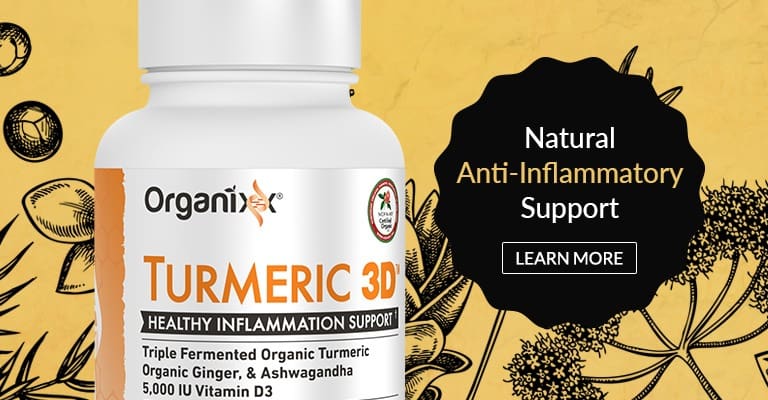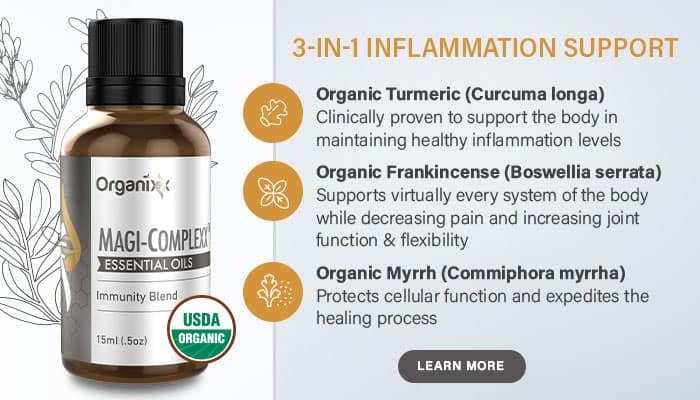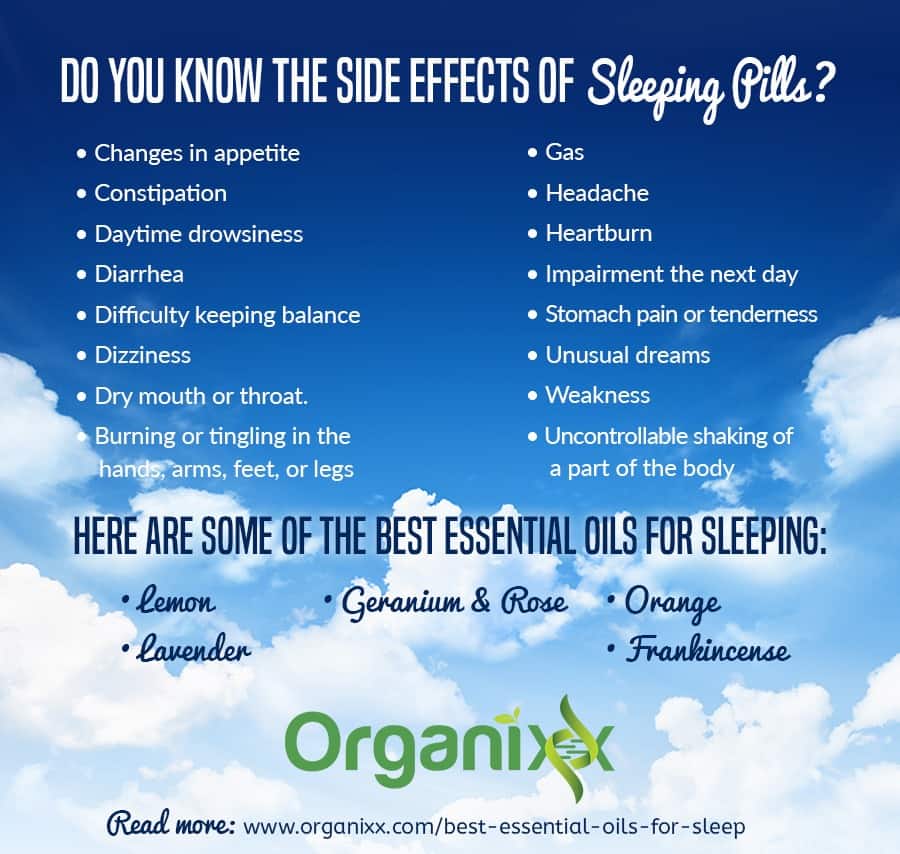Vitamin D is the name given to a group of fat-soluble vitamins found in cod liver oil and fatty fish such as salmon, tuna, and mackerel. These vitamins are essential for the absorption of calcium, iron, phosphate, magnesium, and zinc. Cholecalciferol – also known as vitamin D3 – is made by skin cells when ultraviolet rays (specifically UV-B radiation) from sunlight fall on skin.
All forms of vitamin D – from sun exposure, food, and supplements – are not active and must undergo two chemical reactions within your body to get activated.
The first reaction takes place in the liver and converts vitamin D to 25-hydroxyvitamin D. This form of vitamin D is used to determine a person’s vitamin D status. The second chemical reaction takes place in the kidneys to make the active form, known as 1,25-dihydroxyvitamin D.
Vitamin D helps to maintain blood levels of calcium and phosphate, ensuring that bones are mineralized and healthy. According to the National Institutes of Health (NIH), “Without sufficient vitamin D, bones can become thin, brittle, or misshapen.”
How Does Vitamin D Deficiency Occur?
Vitamin D deficiency happens when consumption is lower than recommended levels, exposure to sunlight is limited, the kidneys don’t convert 25-hydroxy vitamin D to its active form, or when absorption from the gut is not enough.
As vitamin D is commonly added to milk products, having a milk allergy or lactose intolerance – and practicing ovo-vegetarianism and veganism (where no dairy is consumed) can also lead to lower levels of vitamin D.
Common Signs of Vitamin D Deficiency
One of the classic symptoms of vitamin D deficiency is head sweating. Excessive sweating in newborns is considered to be a common, early symptom of vitamin D deficiency.
Another symptom of vitamin D deficiency in children is rickets, in which bone tissue doesn’t mineralize properly, leading to bone softness and skeletal deformities.
Fortification of milk with vitamin D has made rickets a rare disease in the U.S. today. However, using excessive sunscreen and spending a lot of time indoors with limited sun exposure as well as genetic differences in metabolism can still lead to rickets in children today.
Vitamin D Deficiency in Adults: How Much Do You Need?
A common symptom of vitamin D deficiency in adults is osteomalacia – a condition in which bones become soft and there is aching, throbbing bone pain. This is a result of impaired bone metabolism due to inadequate levels of phosphate, calcium, and vitamin D. Another symptom is muscle weakness.
According to the Mayo Clinic, Vitamin D deficiency is an under-diagnosed condition that has now been associated with a higher risk of type 1 diabetes, cardiovascular disease, certain cancers, cognitive decline, depression, pregnancy complications, autoimmunity, and allergy.
In their 2013 report, the Mayo Clinic researchers also reported that low levels of vitamin D during pregnancy and infancy appear to increase susceptibility to schizophrenia, type 1 diabetes, and multiple sclerosis (MS) in later life.
While there is general consensus that too little vitamin D is detrimental, there is an ongoing debate about the levels of 25-hydroxyvitamin D needed for optimum health, especially bone health.
A committee of the Institute of Medicine in Washington, D.C. agreed that people are at risk of vitamin D deficiency at levels of 25-hydroxy vitamin D that are less than 30 nanomoles per liter (nmol/L) or 12 nanograms per milliliter (ng/mL). Further, the committee stated that people are at risk for inadequacy at levels ranging from 30-50 nmol/L or 12-20 ng/mL.
According to the Institute, everyone has “sufficient” vitamin D at levels equal to or greater than 50 nmol/L or 20 ng/mL. However, blood levels of 25-hydroxy vitamin D more than 125 nmol/L or 50 ng/mL have been linked to potential adverse effects.
In 2011, The Endocrine Society stated that the desirable blood level of 25-hydroxyvitamin D is greater than 75 nmol/L (30 ng/mL) for achieving optimal effects on calcium, bone, and muscle metabolism.
To attain these levels, they recommend 1,500-2,000 International Units (IU) daily of supplemental vitamin D as the Recommended Dietary Allowance (RDA) for adults and 1,000 IU daily for children and adolescents.
However, as later developments show, this recommendation is off… and by a very large margin, too.
The “Mistaken” Recommended Daily Allowance (RDA) for Vitamin D?
Researchers at UC San Diego and Creighton University have challenged the RDA for vitamin D recommended by the National Academy of Sciences (NAS) Institute of Medicine (IOM). According to the university researchers, NAS-IOM got their math wrong and underestimated the RDA by a staggering factor of ten!
According to Dr. Cedric F. Garland, Adjunct Professor at UC San Diego’s Department of Family Medicine and Public Health,
“The error has broad implications for public health regarding disease prevention and achieving the stated goal of ensuring that the whole population has enough vitamin D to maintain bone health.”
Robert Heaney, MD, of Creighton University, further wrote:
“We call for the NAS-IOM and all public health authorities…to designate, as the RDA, a value of approximately 7,000 IU/day from all sources.”
This revised recommendation is well below 10,000 IU/day, the designated safe upper limit for teens and adults.
Who’s at Risk for Vitamin D Deficiency?
Getting enough vitamin D from dietary sources alone is difficult. Consuming fortified foods and sufficient exposure to sunlight are both essential for avoiding symptoms of vitamin D deficiency. Dietary supplements may also be necessary.
The following situations can lead to vitamin D deficiency:
- Breastfeeding – vitamin D requirements cannot be met by human milk alone. Most cases of nutritional rickets take place among young, breastfed African Americans. The American Academy of Pediatrics (AAP) recommends that exclusively and partially breastfed infants be supplemented daily with 400 IU of vitamin D.
- Age – older adults are at increased risk of
 developing vitamin D insufficiency because their skin cannot synthesize vitamin D as efficiently as they age, they are likely to spend more time indoors, and they may not consume enough of it in their diet. It is estimated that as many as half of the older adults in the U.S. with hip fractures could be suffering from vitamin D deficiency.
developing vitamin D insufficiency because their skin cannot synthesize vitamin D as efficiently as they age, they are likely to spend more time indoors, and they may not consume enough of it in their diet. It is estimated that as many as half of the older adults in the U.S. with hip fractures could be suffering from vitamin D deficiency. - Limited sun exposure – homebound people, men and women who wear long robes and head coverings for religious reasons, and people with occupations that limit their sun exposure are unlikely to obtain enough vitamin D from sunlight.
- Dark skin – higher levels of melanin significantly reduce the skin’s ability to produce vitamin D from sunlight. However, it is not clear whether lower blood levels of 25-hydroxyvitamin D in people with dark skin have the same health consequences that it does in lighter-skinned people.
- Inflammatory bowel disease (IBD) and other conditions causing fat malabsorption – because vitamin D is fat-soluble, its absorption depends on the gut’s ability to absorb dietary fat. Individuals who cannot properly absorb dietary fat – because of liver disease, cystic fibrosis, celiac disease, Crohn’s disease, and ulcerative colitis – will require vitamin D supplementation.
- Obesity – a body mass index (BMI) equal to or greater than 30 is associated with lower blood 25-hydroxyvitamin D levels. Obese people need to consume more vitamin D, since subcutaneous fat binds and stores 25-hydroxyvitamin D, delaying its release into the blood.
Is Osteoporosis a Symptom of Vitamin D Deficiency?
More than 40 million adults in the U.S. have or are at risk of developing osteoporosis, in which low bone mass and deterioration of bone tissue increase bone fragility and significantly increase fracture risk. Along with inadequate calcium consumption, insufficient vitamin D contributes to osteoporosis by reducing calcium absorption.
Maintaining proper storage levels of vitamin D supports bone strength, which in turn can help to prevent osteoporosis in older adults, individuals who have difficulty exercising, and postmenopausal women.
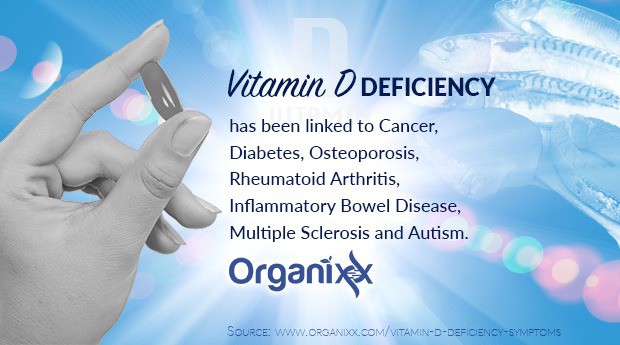
Turmeric 3D from Organixx provides you one of the most “bioavailable” forms of turmeric due to its unique fermentation process. This means your body experiences the maximum benefits of the purest, most potent turmeric available!
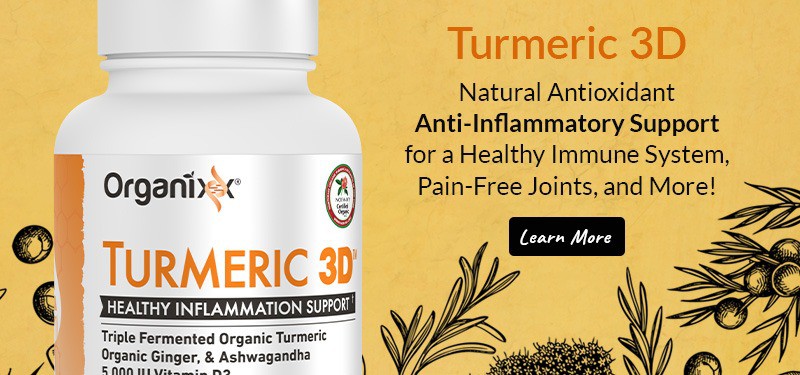
Turmeric, the bright-orange root so frequently used in the cuisine of India and Asia, has been a revered cooking ingredient for centuries. Modern research, however, is also delving into its incredible array of health-promoting benefits of turmeric. According to National Institutes of Health, “Today, turmeric is used as a dietary supplement for inflammation; arthritis; stomach, skin, liver, and gallbladder problems; cancer; and other conditions [1].”
Turmeric (Curcuma longa) is a perennial herbaceous plant from the Zingiberaceae family, the same plant family as ginger. The word “turmeric” comes from the Latin “terra merita” meaning meritorious or sacred earth. The aroma of turmeric essential oil is very much like the freshly cut root − rather spicy, a little sweet, with undertones of earthy and woodsy.
Turmeric essential oil is many times more concentrated than the powdered herb. It’s made from the plant’s underground roots, called rhizomes, and is extracted from the rhizome by steam distillation.
Both powdered turmeric spice and turmeric essential oil are a bright yellow or orange in color due to the pigment curcumin. Curcumin is one of the principal healthy components of turmeric and is what gives the color to curries and mustard and is even used for dyeing fabric.
You’ll sometimes hear the terms “curcumin” and “turmeric” used interchangeably, but keep in mind that curcumin is only one of many compounds found in the turmeric plant.
The Phytochemical Profile of Turmeric Essential Oil
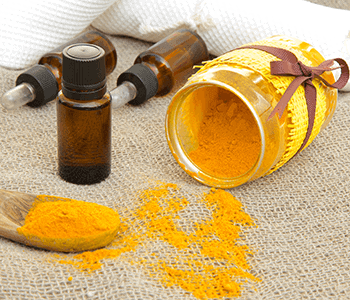 The phytochemical (plant-based, all natural components) content of turmeric essential oil is surprisingly complex. Over 300 phytochemicals contribute to making turmeric essential oil an excellent choice for supporting overall good health.
The phytochemical (plant-based, all natural components) content of turmeric essential oil is surprisingly complex. Over 300 phytochemicals contribute to making turmeric essential oil an excellent choice for supporting overall good health.
The major phytochemicals in turmeric oil are ar-turmerone (20-25 percent), alpha-turmerone (18 percent), beta-turmerone (12-13 percent) and curcumin (2-5 percent). The first three are classed as sesquiterpenes − molecules which help to carry oxygen in the body.
Other special phytochemicals found in turmeric oil include zingiberene (sesquiterpene), beta-caryophyllene (sesquiterpene), eucalyptol (a monoterpene, which helps to reprogram DNA), alpha-phellandrene (monoterpene), beta-sesquiphellandrene (sesquiterpene) and curcumenol [2]. There may well be many other phytochemicals in turmeric essential oil which have yet to be identified and studied.
Historical Use of Turmeric
Turmeric has been used for millennia in ancient healing traditions. In Indian Ayurvedic medicine it has been used traditionally to warm and strengthen the entire body, as a blood purifier, digestive aid, to eliminate worms, improve intestinal flora, and relieve gas.
It is also used in India as a liver and gallbladder cleanser and strengthener, to normalize menstruation, to relieve arthritis and joint swelling, for sprains, burns, bruises, cuts and insect bites, for soothing coughs, easing asthma symptoms, as an antibacterial and antifungal agent.
In traditional Chinese medicine turmeric has been used for indigestion, sore throats and colds, liver ailments, and for wound healing.
6 Ways Turmeric Can Support Good Health
While there are a myriad of traditional uses for turmeric, here are six ways that turmeric and/or turmeric essential oil can be used to support general health and well-being:
#1. Promotes Clear, Unblemished Skin
The antiseptic and antioxidant properties of turmeric essential oil make it a wonderful acne fighter. It is also known to reduce facial hair, and combined with lemon juice, helps to naturally lighten hyperpigmentation of the skin.
A study published in the Dec 2011 issue of the Journal of Cosmetic Dermatology found that skin creams with Curcuma longa extract have photoprotective effects, which means protection against effects of the sun.
According to the study, “Ultraviolet radiations generate reactive oxygen species, leading to adverse effects on skin properties. Botanical extracts are multifunctional in nature having various properties like photoprotection, anti-aging, moisturizing, antioxidant, astringent, anti-irritant, and antimicrobial activity [3].”
The researchers reported their results as being that: “The photoprotective properties of the constituents of C. longa extract and hydrant, moisturizing lipid components of nano vesicles with better skin penetration resulted in improvement in skin properties like skin hydration and sebum content [4].”
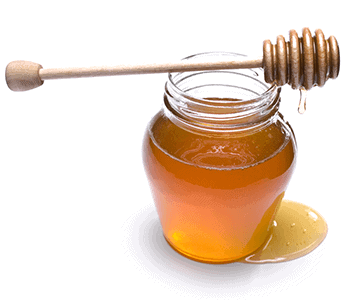 Tip for Use for Acne: Do a patch test in a small inconspicuous place on your inner arm prior to trying this to ensure you don’t have a sensitivity to turmeric essential oil.
Tip for Use for Acne: Do a patch test in a small inconspicuous place on your inner arm prior to trying this to ensure you don’t have a sensitivity to turmeric essential oil.
In a glass mixing bowl combine two drops turmeric essential oil with one to two tablespoons organic raw honey. Mix well and apply to face as a mask. Leave on for 15 minutes and then wash off. While you wait, wash anything the paste came into contact with as it can stain (be sure to protect your clothes!).
A quality turmeric oil mixed with raw honey is gentle, nourishing, and helps promote smooth, unblemished skin. The honey should also help to keep the turmeric from staining the skin, although it’s a good idea to also test the paste first on the inside of your wrist before applying to your face. For best results use the mask no more than 1-2 times per week.
#2. Supports Well-Functioning Joints
Doctors from Chinese and Indian Ayurvedic traditions have used turmeric to address joint issues for centuries. Many recent studies have investigated turmeric’s ability to impact the pain, stiffness, and inflammation associated with both rheumatoid arthritis and osteoarthritis.
One study of note published in the Journal of Medicinal Food in August 2016 was a joint effort by Korean and American researchers. These researchers analyzed all of the randomized clinical trials that had been done to the date of the article.
The researchers stated that the results of the trials “provide scientific evidence that supports the efficacy of turmeric extract (about 1000 mg/day of curcumin) in the treatment of arthritis [5].”
It’s important to note that the researchers also stated that “more rigorous and larger studies are needed to confirm the therapeutic efficacy of turmeric for arthritis [6].”
#3. Improves Mood and Sense of Well-being
Turmeric essential oil has a long tradition of use for its relaxing and mood balancing properties. Try diffusing some turmeric essential oil into the air while praying, meditating, reading, at bedtime, or anytime you want to feel more calm and relaxed.
Research has shown that consuming curcumin (the key compound in turmeric) may also be beneficial for improving mood and happiness levels in those suffering with depression and anxiety.
In a 2014 study published in the Journal of Affective Disorders, researchers “hypothesised that curcumin would be effective for the treatment of depressive symptoms in individuals with major depressive disorder [7].”
Here’s the methodology the researchers used: “In a randomised, double-blind, placebo-controlled study, 56 individuals with major depressive disorder were treated with curcumin (500 mg twice daily) or placebo for 8 weeks. The primary measure was the Inventory of Depressive Symptomatology self-rated version (IDS-SR30). Secondary outcomes included IDS-SR30 factor scores and the Spielberger State-Trait Anxiety Inventory (STAI) [8].”
After the 8-week study was completed, they reported the following results:
“From baseline to week 4, both curcumin and placebo were associated with improvements in IDS-SR30 total score and most secondary outcome measures. From weeks 4 to 8, curcumin was significantly more effective than placebo in improving several mood-related symptoms … Greater efficacy from curcumin treatment was identified in a subgroup of individuals with atypical depression [9].”
#4. Helps With Digestive Issues
Turmeric is considered to be exceptionally helpful with digestive problems. It has been used to help relieve gas, and promote healthy digestion and elimination.
#5. Supports a Healthy Liver
Turmeric is highly esteemed in holistic medicine for its ability to support liver health. Since the liver is the main organ of detoxification, keeping it in tip-top shape is vital for good health.
#6. Supports Oral Health
Porphyromonas gingivalis (P. gingivalis) is a pathogen in the mouth that’s believed to be associated with the progression of periodontal disease. The aim of a 2016 study published in the Journal of Clinical and Diagnostic Research “was to substantiate the antimicrobial activity of various essential oils; eucalyptus oil, chamomile oil, tea tree oil and turmeric oil against P. gingivalis [10].”
After testing various concentrations of the essential oils against P. gingivalis, the researchers concluded that “At 100% concentration all the tested oils possess antimicrobial activity against P.gingivalis with eucalyptus oil being most effective followed by tea tree oil, chamomile oil and turmeric oil [11].”
Precautions When Using Essential Oils
Only Use Quality Oils:
The quality of essential oils available on the market is widely varied. Always ensure you are using high quality essential oils, preferably organic.
It is important to discover whether the maker of an essential oil uses organic growing methods, knows how to distill the oils so that they contain the essential phytochemicals, and avoids the use of toxic chemicals when growing the plants and extracting the oils. Always purchase essential oils from a trusted source. Cheaper is not always better.
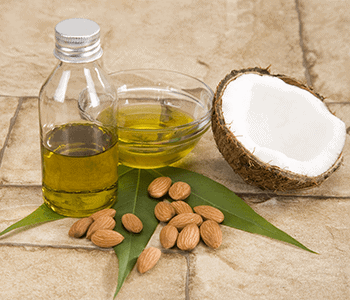
Dilute:
It is recommended to use an organic carrier oil like olive, jojoba, almond, coconut, hemp, or argan to dilute prior to putting any essential oil on the body.
Using a carrier oil aids in absorption, does not affect the potency of the essential oil, and increases the cost-effectiveness of using essential oils for health.
Keep Oils Away From Sensitive Areas:
Never apply essential oils anywhere near eyes, inside ears, or too close to sensitive regions of the body. If this happens by accident, use a carrier oil to dilute − water will not help!
Do a Patch Test Before Using an Oil for the First Time:
Before applying any essential oil, perform a patch test on a small area of skin such as the inside of the elbow. This is important for anyone, but especially critical if you have sensitive skin.
If a reaction occurs, dilute essential oils heavily with an organic carrier oil like olive oil, jojoba, almond, coconut, hemp, or argan oils and test again.
For Babies and Children:
Be very cautious when using essential oils with or around babies and children. They have delicate skin and their bodies are much smaller than adults. Always dilute heavily and seek guidance from a qualified healthcare practitioner before using.
In Pregnancy:
Some essential oils should be avoided during pregnancy. Low doses of turmeric are considered to be safe during pregnancy, but caution should be exercised when using full-strength turmeric oil.
One or two studies showed that consumption of turmeric might stimulate the uterus (the worry being that could possibly increase the risk of premature birth or miscarriage).
However, other studies have demonstrated that curcuminoids actually have a relaxing effect on uterine muscle. While contradictory, what is known is that millions of pregnant women in India and Asia have taken small amounts of turmeric in their daily diet for centuries, without any adverse effects being reported.
Always remember that essential oils are much more concentrated than the whole plant materials they’re extracted from. Therefore always exercise caution when using them − especially when pregnant. Dilute heavily and work with an experienced healthcare provider.
The powerhouse trio of herbs in Magi-Complexx Essential Oil provides the strongest, most synergistic healing effect, helping sufferers of arthritis pain, constant muscle aches and pains, neuropathy, systemic inflammation, slowed wound healing, circulatory challenges, as well as skin irritations like eczema, psoriasis, and acne.
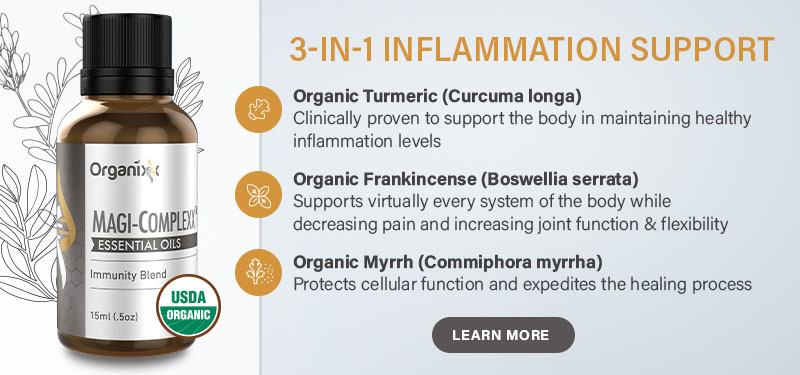
Sleep: That thing we all “have to” do. That most coveted of conditions, though often the most avoided, or the most difficult to achieve. One thing is for certain, when it’s time to lie down and close our eyes to replenish, we would all like two things… for it to be easy to fall asleep, and to awaken hours later feeling refreshed.
Yet, according to the Cancer Treatment Centers of America, Americans spent $32.4 billion on sleep aids in 2012 alone, with 8.6 million people reporting they took medications for sleep just in the month of July 2013. WebMD reports that between a third and a half of all Americans “have insomnia and complain of poor sleep.”
Something is clearly going wrong if so many people are sleeping so badly. But surely taking a pill to fall asleep faster isn’t that big a deal, right? Well, unfortunately it’s not that simple.
Pharmaceutical sleeping medications, as most modern medications, come with a host of side effects, with some being known to be addictive and eventually even affecting memory and attention span. Of course, not all sleeping pills are alike. Some are actually meds aimed at reducing anxiety, some depress the central nervous system and are sedative, some affect melatonin or brain chemistry, and others simply make it easier to fall asleep.
Common side effects of prescribed sleeping pills include:
- Burning or tingling in the hands, arms, feet, or legs
- Changes in appetite
- Constipation
- Daytime drowsiness
- Diarrhea
- Difficulty keeping balance
- Dizziness
- Dry mouth or throat
- Gas
- Headache
- Heartburn
- Impairment the next day
- Stomach pain or tenderness
- Uncontrollable shaking of a part of the body
- Unusual dreams
- Weakness
- Changes in blood pressure/heart rate
You can also be allergic to sleeping pills, risking more serious reactions from difficulty breathing, to vomiting, and even to anaphylactic shock. In any case, you should never mix these pills with alcohol.
With so many risks, why do so many Americans take meds to help them sleep?
Sleep is Vital to Your Health
Sleep is as essential to your health as food and water. Yet we don’t often make getting a good night’s sleep enough of a priority. We even make it harder to sleep properly by incorporating things like caffeinated drinks, or huge amounts of screen time into our lives, both of which affect our brain chemistry and sleep cycles. Not to mention what stress and late nights can do to a body.
So how much sleep do you need?
The National Sleep Foundation conducted a two-year study, comprising 18 leading scientists and researchers. They published their results in 2015, listing their findings on the minimum amounts of sleep humans need at each age.
The recommended number of hours are:
- Newborns: 14 – 17 hours
- Infants: 12 – 15 hours
- Pre-Schoolers: 10 – 13 hours
- School Aged Children: 9 – 11 hours
- Teens: 8 – 10 hours
- Adults & Young Adults: 7 – 9 hours
- Older Adults: 7 – 8 hours
Repeatedly not getting enough sleep leads to “sleep debt.” Chronic sleep debt can have serious repercussions on your health, including:
- lowered immune system
- decreased concentration or alertnes
- weight gain
- higher risk of diabetes
- loss of libido
- accelerated aging
- increased risk of heart disease, stroke, and cancer
In fact, according to the National Sleep Foundation, adults who sleep fewer than six hours per night are twice as likely to have a stroke or heart attack over those who sleep six to eight hours a night — regardless of age, weight, smoking or exercise habits.
Also worrying is the correlation between sleep and cancer. The types of cancer most frequently connected to higher risk are prostate, colorectal, and breast. It’s also worth noting that sleep apnea is connected to a higher risk of any type of cancer.
A 2013 study published in Cancer Epidemiology, Biomarkers and Prevention “identified a twofold risk of developing prostate cancer in men with sleep insomnia.” A study published in the journal Cancer in 2010, reported that those that sleep less than six hours a night have a 50% higher risk of colorectal cancer, while a 2012 study suggests inadequate sleep is connected with both cancer recurrence and the risk for more aggressive breast cancer.
Tips for a Better Night’s Sleep
Now the question arises: If we need sleep for our health and prevention of more serious diseases, and sleeping medications come with risks and harmful side effects themselves… what can we do to ensure a good night’s rest?
Glad you asked. Here are some top tips for a better sleep:
- Stick to a sleep schedule. This means you stick to the same times to wake up and sleep, even
 on weekends. Doing so will help your body clock to regulate, and assist in both falling and staying asleep at night.
on weekends. Doing so will help your body clock to regulate, and assist in both falling and staying asleep at night. - Have a bedtime ritual. Allow a good 30 minutes for a relaxing routine activity that is free from technology. Separating your bed/sleep time from activities that cause stress, anxiety, or excitement will make it easier to fall and stay asleep. This includes avoiding bright lights, and “screens” (TV, mobile devices, computers, etc.)
- Avoid naps. If you have sleeping problems, don’t nap, particularly in the afternoon. While it’s true a power nap can be useful, for those that have problems falling asleep at night, avoiding naps can help.
- Daily exercise. National Sleep Foundation suggests vigorous exercise at any time of day, but not at the expense of your sleep. Even light exercise is beneficial.
- Assess your sleeping space. It may seem obvious but your bedroom needs to promote a good night’s sleep! This includes evaluating the temperature, with the National Sleep Foundation suggesting a cool 60-67 degrees F being optimal. Noise (including your partner’s snoring) should be diminished as much as possible. Consider ear plugs, white noise machines, and other devices to block out sounds. To make the room as dark as possible, consider blackout curtains and eye covers/shades. Also be aware of allergens. A good air purifier can make a world of difference if you are sensitive.
- Spring for a good mattress. Pun intended! Again, it may seem obvious, but the mattress and pillows you use can make a huge difference in how well you sleep. Most mattresses have a lifespan of 9-10 years, if it’s good quality. Pillows can become worn out, too. Many advances have been made in the arena of memory and gel foam. Your sleep is a worthy investment in your health, not just a luxury.
- Use essential oils. These powerhouses of nature have a variety of health benefits, but there are a few that are well-known to help you sleep better. They include: rose, geranium, frankincense, orange, lemon, and lavender.
The 5 Best Essential Oils for Sleep
 The important thing to know is that high quality essential oils are 100% natural, with few side effects, if any. These oils are typically distilled from the leaves, flowers, and stems of plants, leaving a concentration of phytochemicals (naturally occurring plant chemicals) that are 40-50% more powerful than the plant itself.
The important thing to know is that high quality essential oils are 100% natural, with few side effects, if any. These oils are typically distilled from the leaves, flowers, and stems of plants, leaving a concentration of phytochemicals (naturally occurring plant chemicals) that are 40-50% more powerful than the plant itself.
While many people associate essential oils with aromatherapy, or even just making places smell nice, plants and their essential oils have been used for thousands of years in traditional medicine.
In recent decades they have been getting increased attention from researchers, in pursuit of proof to their efficacy for a wide range of treatments and conditions.
Essential oils have been proven beneficial for supporting the body with nearly every physical ailment under the sun, including digestive problems, anxiety, depression, pain, bacterial infection, viruses, headaches… and even sleep.
While there are several essential oils that can aid with getting a better night’s sleep, here are a few of the best:
Rose and Orange:
A 2014 study showed significant effects from the inhalation of rose and orange essential oils reporting it “induces physiological and psychological relaxation.” A 2014 review looked at the effects of orange essential oil on insomnia and anxiety, citing positive results, while rose oil has had notable sedative effects in studies on mice, gerbils, and humans.
Geranium:
This lovely smelling essential oil has been long recommended for women in childbirth, due its relaxing effects. It was also seen to improve the sleep for those suffering from rhinitis (allergies) in a 2015 study conducted at Chung-Ang University in Seoul, Korea.
Frankincense:
This Biblically-famous essential oil has been said to be effective for anxiety and depression, calming the mind, as well as helping with insomnia.
In a study of cancer patients published in 2016, researchers found 64% reported improved sleep using “aromasticks” that included frankincense. One of the reasons frankincense essential oil may be so useful for helping sleep is its studied benefits for pain. A 2004 study published in Thailand reported oil of frankincense as one of the oils found to reduce both pain and anxiety in women in childbirth.
Lemon:
It may surprise you due to the invigorating smell of citrus fruits, but lemon oil has also been proven to be an effective sedative, with anti-anxiety benefits, too. In particular, a 2011 study tested these qualities on mice, in an attempt to understand why lemon essential oil is “one of the most popular compounds in Brazilian traditional herbal medicine.”
Lavender:
Lavandula augustifolia, known as “true lavender,” is well-known as a fragrance and flower. In the fields of complementary medicines, lavender essential oil is well known as a super-oil, especially when it comes to sleep. Happily, science backs this claim with study after study.
In particular, lavender essential oil has been reported as a natural remedy for mild insomnia, with no long-term side effects. A 2013 and 2015 study of ICU patients, both reported that lavender oil increased sleep quality and decreased anxiety.
Also in 2015, a study involving 79 college students investigated lavender oil on sleep, showing it did indeed improve sleep quality, with a “significant finding for waking feeling refreshed.”
How to Use Essential Oils for Improved Sleep
Inhalation:
Here are a few ways to enjoy the benefits of essential oils via inhalation.
- Put a few drops on a cotton ball, and place on your pillow.
- Place drops directly on your pillow.
- Purchase a cold diffuser. (Heat lessens the effects of these oils). Add drops of your favorite oils and fill your room with these wonderful fragrances.
- Place some drops of your chosen oil on your hands, and rub them together, while breathing in the aroma.
- Dilute with a carrier oil and place some directly behind your ears or at the base of your throat for a medicinal “perfume.”

- Add some drops to your laundry at the last (cold) rinse cycle.
- Add drops of essential oil to your bath for a pleasant, relaxing, aromatherapeutic effect.
Skin:
Essential oils can be effective when absorbed through the skin. Of course, be careful to not stain clothing or delicate materials, never use close to sensitive areas (eyes, nose, genitals), and test for reactions on a small patch of skin before a full application. For all of the methods listed below, essential oils should be diluted with a carrier oil before being applied directly to the skin. Note that it takes approximately 20 minutes for oils to be fully absorbed.
- Rub your chosen oil on the bottom of your feet before bed. Even the tops of your toes, if reaching your feet is difficult.
- Place a drop behind your ears, or rub on the back of your neck. Under the breasts can be a good place, too.
- Create a DIY hand (or body) lotion by mixing a few drops of essential oils with a small scoop of jojoba or coconut oil.
- Add drops to a good olive oil or other good quality carrier oil and massage into your skin. Better yet, have your partner massage it into your skin for you!
- Add some drops to cream and soak your feet and hands.
- Create a personal spray diffuser by adding drops to a small spray bottle, with or without water and spritzing your skin.
Ingestion:
Some essential oils have been deemed safe for ingestion. Common sense is needed, and the guidance of a professional aromatherapist is best.
- Add a drop or 2 to your favorite drink.
- Place a few drops in about a tablespoon of juice or water, swish it around vigorously then quickly toss it to the back of your throat and swallow.
- Place a couple drops in vegan or vegetarian gel caps.
- Add to your smoothie or foods you are preparing. (Be sparing until you know the flavors you like, and each oil’s potency)
7 Essential Oil Recipes for Sleep
Here are some essential oil blends and recipes you can try out to help you sleep better. Blend the following oils together to use directly in the ways listed above in the “How to Use” section.
Essential Oil Sleep Blend #1
- 15 drops lavender essential oil
- 5 drops frankincense oil
- 6 drops orange essential oil
- 7 drops geranium rose essential oil
Essential Oil Sleep Blend #2
- 3 drops geranium rose essential oil
- 2 drops lavender essential oil
Essential Oil Sleep Blend #3
- 1 drop lemon essential oil
- 2 drops orange essential oil
- 1 drop frankincense oil
Essential Oil Sleep Blend #4
- 3 drops lavender essential oil
- 3 drops orange essential oil
Essential Oil Sleep Blend #5
- 3 tablespoons of milk or cream
- 5 drops of geranium rose essential oil
- 1 drop orange essential oil
- 1 drop lavender essential oil
Add to a bath, or soak feet/hands
Essential Oil Sleep Blend #6
- 3 tablespoons cream
- 2 drops lavender
Add to a bath, or soak feet/hands
Essential Oil Sleep Recipe #7
- A jug of water
- 5-10 drops peppermint oil
- 5 drops lemon
- 5 drops orange
- Stevia to taste
To make just a glass, add 1 scant drop each of peppermint, lemon, and orange oil. If this is too strong, apply oils to a clean toothpick and swirl in the water to provide just a hint of flavor.
A Word of Caution When Using Essential Oils
Essential oils contain potent plant chemicals. Despite their natural origins they should be used with care and optimally with the guidance of a qualified professional. To receive the most therapeutic benefits be sure to use only the highest quality, organic essential oils.
The powerhouse trio of herbs in Magi-Complexx Essential Oil provides the strongest, most synergistic healing effect, helping sufferers of arthritis pain, constant muscle aches and pains, neuropathy, systemic inflammation, slowed wound healing, circulatory challenges, as well as skin irritations like eczema, psoriasis, and acne.

Have you ever partaken of an Indian or South Asian curry? The reason they are typically yellow in color is because they contain the root spice turmeric. Known scientifically as Curcuma longa, turmeric is found all over South Asia and is believed to have been in use in India as both a spice and as a medicinal component for at least 5000 years.
The many health benefits of turmeric have long been exploited in Ayurveda, the traditional Indian system of medicine. According to customary Ayurvedic practice:
- Turmeric maintains gut flora and protects against stomach disorders. It’s also a natural antiseptic and is useful for disinfecting cuts, burns, wounds, and other skin infections.
- Turmeric detoxes
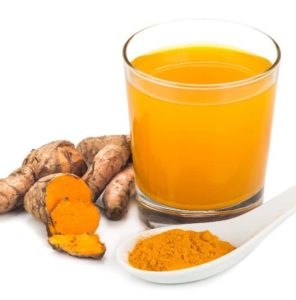 the liver. Curcumin (a primary compound of turmeric root) has been found to increase the flow of bile, which is necessary for breaking down dietary fat during digestion.
the liver. Curcumin (a primary compound of turmeric root) has been found to increase the flow of bile, which is necessary for breaking down dietary fat during digestion. - Turmeric can help to manage blood sugar.
- Due to its anti-inflammatory and pain relieving properties, turmeric is used for treating arthritis inflammation and pain.
Traditionally, turmeric is also used to treat cough, tonsillitis, sore throat, swollen gums and canker sores, upper respiratory congestion, dry cough, and asthma.
Turmeric Contains More Than 300 Bioactive Components
But it’s not just traditionalists who value turmeric. According to modern science, the list of turmeric’s health benefits – specifically, of its more than 300 bioactive components known as “curcuminoids,” which exert various beneficial biological actions in our body – is growing by the day.
Thousands of scientific studies have been carried out on curcumin, the main curcuminoid and active ingredient present in turmeric. This research is demonstrating that curcumin has powerful anti-inflammatory and antioxidant properties and is believed to be mainly responsible for many of turmeric’s health benefits.
Why Is Inflammation Bad News for Your Health?
Inflammation has been getting a bad rap in the media recently. Inflammation is our body’s natural response to cellular and tissue damage caused by:
- injury
- harmful external invaders such as bacteria and viruses
- toxic pollutants that enter our bodies via our diet or from the environment
Inflammation starts out as a protective response that works to eliminate the original cause of damage, clear out damaged and dying cells, and begin the process of repair and healing.
Although inflammation is beneficial for our body in the short term, ongoing inflammation is now known to play a major role in almost every chronic disease including:
- diabetes
- heart disease
- Alzheimer’s and other brain degenerative diseases
- cancer
Inflammation and Heart Disease
Inflammatory mechanisms have been linked to the development of atherosclerosis, an early step in the formation of heart disease. Inflammatory mechanisms have also been shown to trigger thrombosis, leading to heart infarcts (attacks) and strokes.
Inflammation and Cancer
Similarly, chronic inflammation is a necessary component for cancer formation and progression. The so-called “tumor microenvironment” – largely controlled by inflammatory cells – plays an active role in the growth, survival, and spread of cancer cells.
The tumor microenvironment is the environment in which the tumor exists and usually includes blood vessels, immune cells such as lymphocytes, inflammatory cells, and various signaling molecules.
Turmeric’s Anti-Inflammatory Activity
Curcumin has a long history of use in Ayurvedic medicine as a treatment for inflammatory conditions. This is supported by scientific research published in Advances in Experimental Medicine and Biology, which shows that curcumin fights inflammation by interacting with and blocking the actions of a number of different molecules that play a role in the inflammatory process.
Results from the Phase IIa Clinical Trial of Curcumin for the Prevention of Colorectal Neoplasia indicate that curcumin is well tolerated, with only mild gastrointestinal disturbances. In other words, turmeric’s health benefits don’t come with a laundry list of side effects, like many mainstream drugs do.
Fighting Free Radicals and Boosting Natural Antioxidants with Turmeric
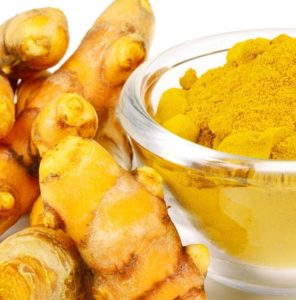 Free radicals are highly reactive chemicals that are formed daily in our bodies as a result of normal biological metabolic activity. However, thanks to the ever-increasing levels of toxic chemical pollution in our environment, we’re now being bombarded with many more free radical attacks than ever before.
Free radicals are highly reactive chemicals that are formed daily in our bodies as a result of normal biological metabolic activity. However, thanks to the ever-increasing levels of toxic chemical pollution in our environment, we’re now being bombarded with many more free radical attacks than ever before.
Free radicals can damage cellular structures including the outer protective cell membrane, cellular proteins, and even DNA – paving the way for chronic diseases such as heart disease, Alzheimer’s, and cancer to develop. Free radical damage is also believed to contribute significantly to the aging process.
According to Advances in Experimental Medicine and Biology, Turmeric contains powerful curcuminoid antioxidants which can neutralize harmful free radicals and minimize the damage they cause in our bodies.
Not only that, but in a 2013 study published in Toxicological & Environmental Chemistry, turmeric was shown to enhance the activity of our body’s natural antioxidant enzymes, including superoxide dismutase (SOD), catalase, and glutathione peroxidase.
SOD helps to break down and inactivate harmful superoxide radicals. Catalase protects our cells from oxidative damage caused by reactive oxygen species (ROS), which are a type of harmful free radical that contains oxygen. Similarly, the main biological role of glutathione peroxidase is to protect our cells from oxidative damage.
In other words, the antioxidant benefits of turmeric include neutralization of free radicals as well as enhancing the activity of natural enzymes in our body that also inactivate them.
Can Turmeric Help Protect Against Many Types of Cancer?

Extensive research indicates that the health benefits of turmeric may include both prevention and treatment of cancer.
In studies, curcumin has been shown to block the proliferation of a wide variety of tumor cells by turning off multiple molecular mechanisms that otherwise allow them to grow uncontrollably.
Some researchers believe curcumin may interfere with up to a hundred different cell signaling pathways – including those of the cell cycle, apoptosis (programmed cell death), proliferation, invasion, angiogenesis (growth of new blood vessels to support tumor growth), metastasis, and inflammation.
Not surprisingly perhaps, curcumin has been reported to have anti-cancer activity against leukemia, melanomas, sarcomas and lymphomas – as well as against gastrointestinal, breast, ovarian, head and neck, and lung cancers.
Evidence also suggests that curcumin may even help to prevent cancer from developing at all. In a 2012 Phase II clinical trial published in the journal Cancer Prevention Research, curcumin was given to 44 smokers daily for 30 days, with 8 of them already showing lesions in the colon that sometimes turn into colorectal cancer.
Of the 41 subjects that completed the study, 4 grams of curcumin given daily reduced the number of lesions by 40%, reducing the likelihood that they will develop colorectal cancer.
How Can You Get Enough Curcumin?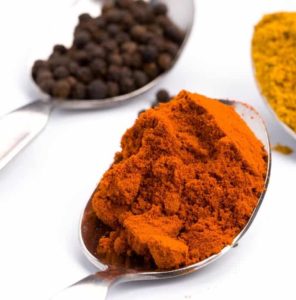
One of the major problems with curcumin is that it’s poorly absorbed in our gut. Also curcumin is fat soluble, but not water soluble. So it’s advisable to consume it in a meal cooked with a high-quality fat source such as extra virgin olive oil or coconut oil.
How Much Curcumin Is in Turmeric?
The curcumin content of turmeric is only around 3% by weight – which is why most studies looking at turmeric’s health benefits use extracts that have been standardized to include large amounts of curcumin, usually at doses of 1 gram per day or even more.
It would be very difficult to consume such a high dose of curcumin every day solely from the turmeric present in curry dishes. To help take advantage of the many diverse health benefits being credited to turmeric, you may wish to consume a proven, reliable extract containing significant amounts of curcumin that is more available to your body.
Turmeric 3D from Organixx provides you one of the most “bioavailable” forms of turmeric due to its unique fermentation process. This means your body experiences the maximum benefits of the purest, most potent turmeric available!



